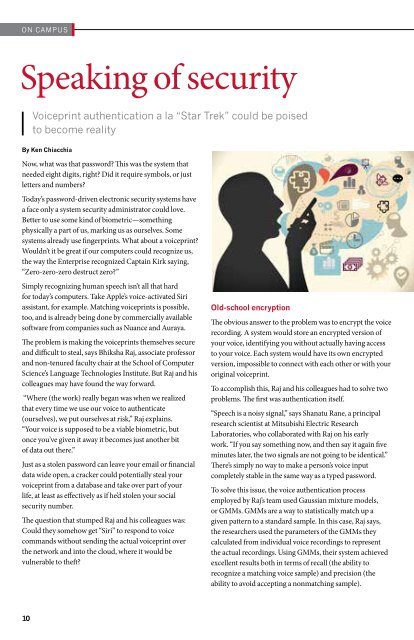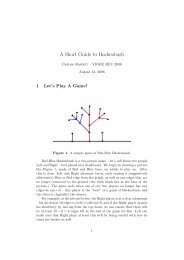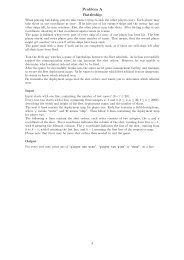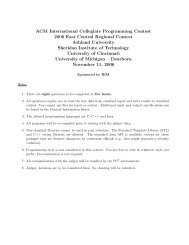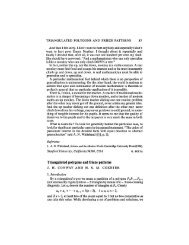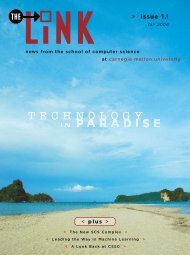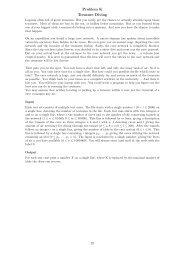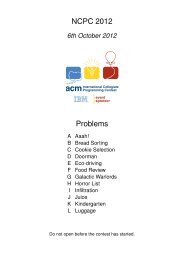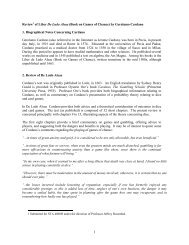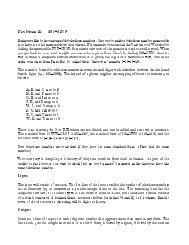Download now (1.3MB, PDF reader required) - Link home page
Download now (1.3MB, PDF reader required) - Link home page
Download now (1.3MB, PDF reader required) - Link home page
Create successful ePaper yourself
Turn your PDF publications into a flip-book with our unique Google optimized e-Paper software.
ON CAMPUS<br />
Speaking of security<br />
Voiceprint authentication a la “Star Trek” could be poised<br />
to become reality<br />
by ken chiacchia<br />
Now, what was that password This was the system that<br />
needed eight digits, right Did it require symbols, or just<br />
letters and numbers<br />
Today’s password-driven electronic security systems have<br />
a face only a system security administrator could love.<br />
Better to use some kind of biometric—something<br />
physically a part of us, marking us as ourselves. Some<br />
systems already use fingerprints. What about a voiceprint<br />
Wouldn’t it be great if our computers could recognize us,<br />
the way the Enterprise recognized Captain Kirk saying,<br />
“Zero-zero-zero destruct zero”<br />
Simply recognizing human speech isn’t all that hard<br />
for today’s computers. Take Apple’s voice-activated Siri<br />
assistant, for example. Matching voiceprints is possible,<br />
too, and is already being done by commercially available<br />
software from companies such as Nuance and Auraya.<br />
The problem is making the voiceprints themselves secure<br />
and difficult to steal, says Bhiksha Raj, associate professor<br />
and non-tenured faculty chair at the School of Computer<br />
Science’s Language Technologies Institute. But Raj and his<br />
colleagues may have found the way forward.<br />
“Where (the work) really began was when we realized<br />
that every time we use our voice to authenticate<br />
(ourselves), we put ourselves at risk,” Raj explains.<br />
“Your voice is supposed to be a viable biometric, but<br />
once you’ve given it away it becomes just another bit<br />
of data out there.”<br />
Just as a stolen password can leave your email or financial<br />
data wide open, a cracker could potentially steal your<br />
voiceprint from a database and take over part of your<br />
life, at least as effectively as if he’d stolen your social<br />
security number.<br />
The question that stumped Raj and his colleagues was:<br />
Could they somehow get “Siri” to respond to voice<br />
commands without sending the actual voiceprint over<br />
the network and into the cloud, where it would be<br />
vulnerable to theft<br />
old-school encryption<br />
The obvious answer to the problem was to encrypt the voice<br />
recording. A system would store an encrypted version of<br />
your voice, identifying you without actually having access<br />
to your voice. Each system would have its own encrypted<br />
version, impossible to connect with each other or with your<br />
original voiceprint.<br />
To accomplish this, Raj and his colleagues had to solve two<br />
problems. The first was authentication itself.<br />
“Speech is a noisy signal,” says Shanatu Rane, a principal<br />
research scientist at Mitsubishi Electric Research<br />
Laboratories, who collaborated with Raj on his early<br />
work. “If you say something <strong>now</strong>, and then say it again five<br />
minutes later, the two signals are not going to be identical.”<br />
There’s simply no way to make a person’s voice input<br />
completely stable in the same way as a typed password.<br />
To solve this issue, the voice authentication process<br />
employed by Raj’s team used Gaussian mixture models,<br />
or GMMs. GMMs are a way to statistically match up a<br />
given pattern to a standard sample. In this case, Raj says,<br />
the researchers used the parameters of the GMMs they<br />
calculated from individual voice recordings to represent<br />
the actual recordings. Using GMMs, their system achieved<br />
excellent results both in terms of recall (the ability to<br />
recognize a matching voice sample) and precision (the<br />
ability to avoid accepting a nonmatching sample).<br />
10


